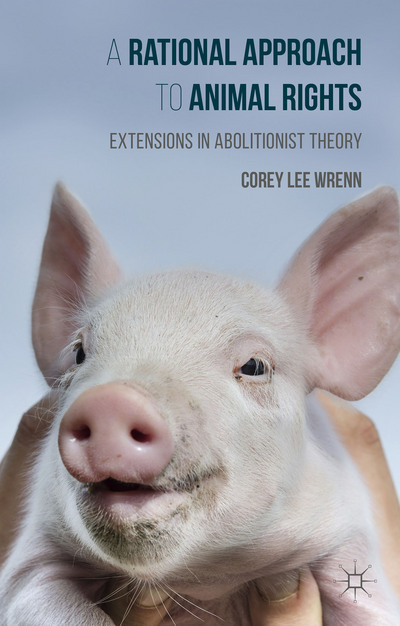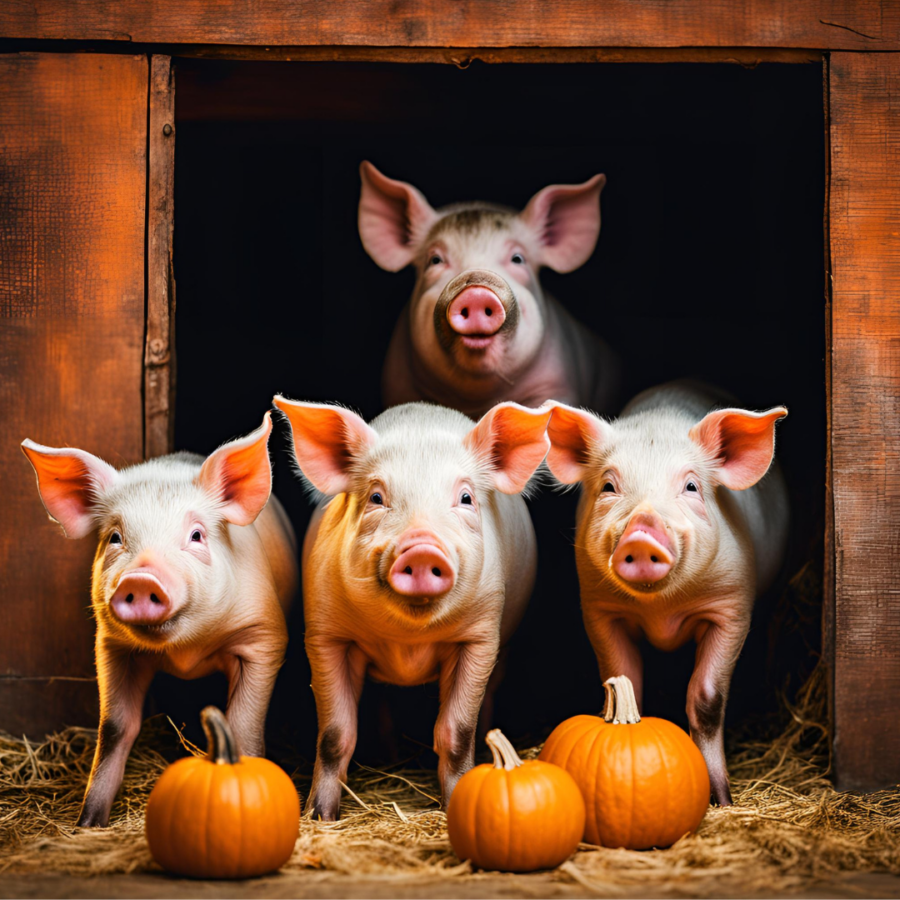What is Samhain?
Samhain (meaning “November” in Gaelic”) is a major harvest festival in pagan Europe that would become the modern incarnation, Halloween. Still practiced by neo-pagans and witches today, Samhain is marked as a time to “let your ‘wild side’ out, to be free and more connected to the ancient ways” (Greenleaf 133). This is often interpreted as an opportunity to shake loose the domesticating effects of civilization. Indeed, from a vegan perspective, this may be an opportunity for humans to embrace their own animality and question the limits of human supremacist ideologies that position humans as distinct from and superior to the constraints of nature.
Historically, however, it has been linked to violence. Truly a day of the dead, this autumnal celebration has entailed the “harvesting” of Nonhuman Animals condemned as “food” or “stock.” Rather than examining shared animality and embeddedness in nature, humans living in agrarian communities instead enacted their supremacy by dominating animalized others.
Harvesting Lives
Witches have noted that Samhain is the time for killing most of the herd for winter supplies, creating a distinctly ominous air: “Slaughter, barren earth, and decreasing daylight made the concept of death an ever-present reality” (Sabrina 2001: 117). West (2002) adds that Nonhuman Animals who were not thought able to survive the winter (presumably sick, old, disabled, or otherwise vulnerable) would also be slated for slaughter, as well as those who were simply thought too expensive to keep alive. West frames these as mercy killings rather than systematic violence against “unproductive” or “burdensome” individuals who are especially marginalized in an increasingly capitalistic society. She rationalizes that the leaner months of winter meant that pigs, cows, and other animals constituted more mouths to feed, making it more prudent to turn those mouths into food, a perspective that could be seen as practical from an anthroparchal perspective or dismissive and cruel from a vegan feminist one. Raymond Buckland (2002), too, describes this third “harvest” as a culling of weaker animals, taking this history to mean that the sabbat is subsequently well suited to rituals that aid the witch in releasing weaknesses.
As might be expected, this mass slaughter is interpreted as an invitation to feast on the bodies of Nonhuman Animals. West (2002) emphasizes that eating other animals on Samhain is in continuation of traditional European practices and a means to honour “our ancestors” (71). Sometimes the very blood of these slain animals would be baked into cakes and puddings (Franklin 1997). Wiccan Scott Cunningham assures readers that this association is only symbolic (1995: 67), but the violence it symbolizes has ramifications in a deeply speciesist society.
Who Count as Ancestors?
Samhain truly is a festival of death, one in which witches and pagans are expected to remember loved ones and ancestors who have passed on. In honouring ancestors, festivals of the dead reach back across an ambiguous number of generations, but few, if any, seriously consider the full extent of the human practitioner’s ancestry. Vegan witchcraft would remind that humans have descended from apes quite recently in the evolutionary time scale, and before this, humans are linked to all manner of pre-humanoid species including small mammals, fishes, and even microorganisms. In addition to Nonhuman Animals, the earth itself, is an ancestor, providing the first elementary ingredients (carbon, hydrogen, oxygen, and so on) for what would become sentient life. Trillions of Nonhuman Animals over more than four billion years of Earth’s existence have thus contributed to human flourishment. Acknowledging this lineage of interconnectivity could disrupt human supremacy.
Remembering and Reclaiming
If Samhain is a time to reflect on death, it is also a time to reflect on injustice. American witch Marian Weinstein (2020) takes this as an opportunity to remember the violence of the burning times and a powerful time for hexing the patriarchy or individual perpetrators of misogynistic acts, for instance, while leading ecofeminist witch Starhawk strategically and compassionately makes space for grief in her San Franscico Samhain events given the city’s tragic association with the AIDS epidemic. Hungarian witch Z. Budapest, like Weinstein, finds that this occasion calls for retaliation spellwork, as Samhain is “the night of the revengeful Mother, who is the fierce protector of her sisters when aroused” (1986: 90).
Falling as it does on the eve of World Vegan Day, Samhain might serve as a space for communally acknowledging the grief associated with the global violence on Nonhuman Animals. Indeed, The Vegan Society chose November 1st to celebrate veganism as founder Donald Watson declared the founding of the organization in November 1944. It also happens to align with All Saint’s Day. The vegan version of All Saint’s Day, which follows the Day of the Dead, could celebrate the promise of life following death, or a more peaceful multispecies society that could be achieved beyond speciesism.
Samhain, for vegans, should be a time to honour ancestors, but also recognize that “harvest time” has been a period of intense violence across the ages. Just as the mass killing of witches has been cause for sombre remembrance, so should that of Nonhuman Animals who have been harassed, killed, and “sacrificed” for entertainment, sustenance, religious bargaining for a deity’s favour, scientific advancement, and so on. For those who practice it, Halloween might be a time for vegan baking and sharing plant-based sweets, but it might also be a time to hold space for other animals. This could mean lighting a candle, providing food and shelter for other animals, or taking a tip from the feminist witches and hexing the anthroparchy.
References
Buckland, R. 2002. Complete Book of Witchcraft. Woodbury: Llewellyn Publications.
Budapest, Z. 1986. The Holy Book of Women’s Mysteries. Oakland: Consolidated Printers.
Cunningham, S. 2007. Cunningham’s Encyclopaedia of Wicca in the Kitchen. Woodbury: Llewellyn Publications.
Franklin, A. 1997. Familiars. Berks: Capall Bann Publishing.
Greenleaf, C. 2016. The Book of Kitchen Witchery. London: CICO Books.
Sabrina, L. 2001. The Beliefs, Rites, and Rituals of the Wiccan Religion. Franklin Lakes: New Page Books.
Weinstein, M. 2020. Positive Magic. Newburyport: Weiser Books.
West, K. 2002. The Real Witches’ Kitchen. London: Thorsons.

Readers can learn more about the sociology of veganism in my 2016 publication, A Rational Approach to Animal Rights and more about vegan witchcraft in my book of the same name published with Routledge (2026).
Receive research updates straight to your inbox by subscribing to my newsletter.

